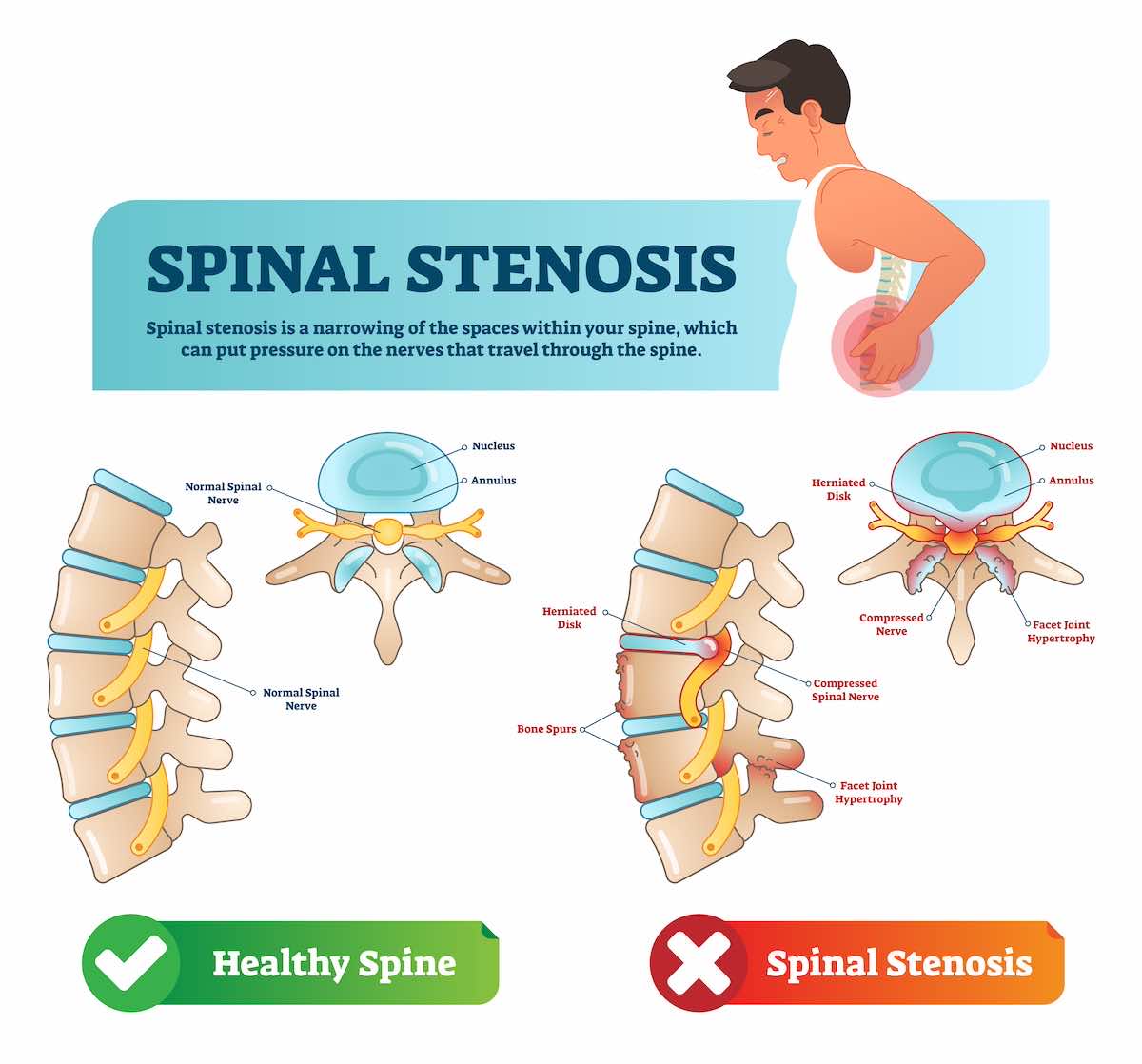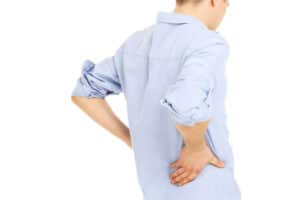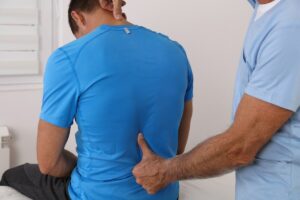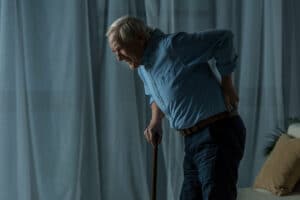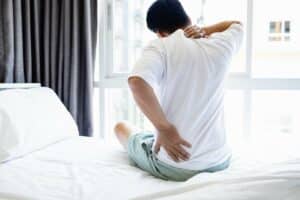Free download: Top 10 Natural & Easy Remedies for Joint Pain from Home. Learn these helpful remedies.
Estimated Reading Time: 7 minutes read
Dealing with spinal stenosis can be challenging. This condition narrows spaces in your spine, causing discomfort. It’s expected as we age, mainly due to osteoarthritis.
The narrowing puts pressure on your spinal nerves. This leads to various symptoms, ranging from mild discomfort to severe pain. Knowing about spinal stenosis is crucial for managing it effectively.
Spinal stenosis is more common in older adults. It often starts with subtle symptoms that are easy to miss. The spine is crucial for our mobility and health. So, recognizing symptoms early is critical to maintaining a good quality of life.
In the following sections, we’ll look at exercises to ease the pain. These exercises can improve mobility for those with spinal stenosis.
Table of Contents
What Causes Spinal Stenosis?
Spinal stenosis doesn’t just appear out of nowhere. It’s usually a result of changes in your spine over time. Aging is a big factor here. As we get older, our spine naturally changes.
One common cause is osteoarthritis. This condition wears down the cushions in our spine joints. As these cushions wear down, our bodies try to fix them. This fix can lead to bone spurs, which take up space in the spine.
Other factors can play a role too. Things like herniated disks or thickened ligaments also narrow the spinal space. And in rare cases, spinal stenosis is something people are born with.
Injuries to the spine can lead to spinal stenosis as well. Even if the injury happened long ago, it can still affect your spine. Overuse of certain activities or jobs can also contribute.
Understanding these causes helps in managing and preventing spinal stenosis. It’s not just about aging – our lifestyle choices matter too.
Symptoms of Spinal Stenosis
The symptoms of spinal stenosis can vary but often include:
- Pain in the Back or Neck: This is the most common symptom. The pain might worsen over time and with certain activities.
- Numbness or Tingling: People might experience these sensations in their arms, hands, legs, or feet.
- Muscle Weakness: There can be a noticeable decline in the strength of the limbs.
- Problems with Balance: Some might struggle with coordination and balance as the condition progresses.
If you’re experiencing these symptoms, it’s essential to consult a healthcare professional for a proper diagnosis and treatment plan.
Exercises for Spinal Stenosis
A. Stretching:
1. Knee to Chest Stretch
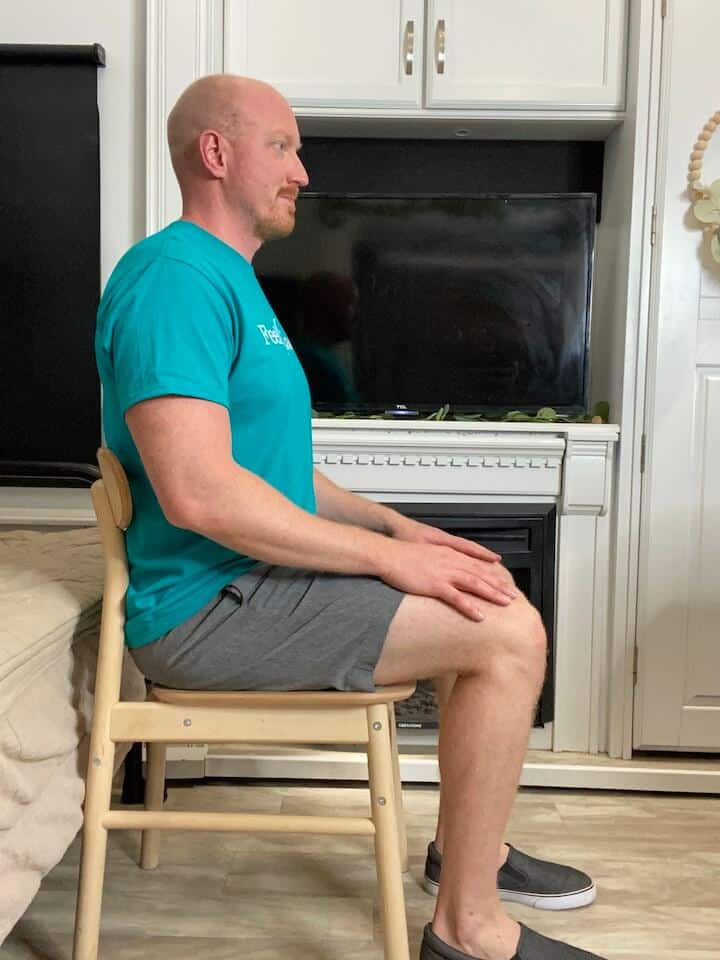
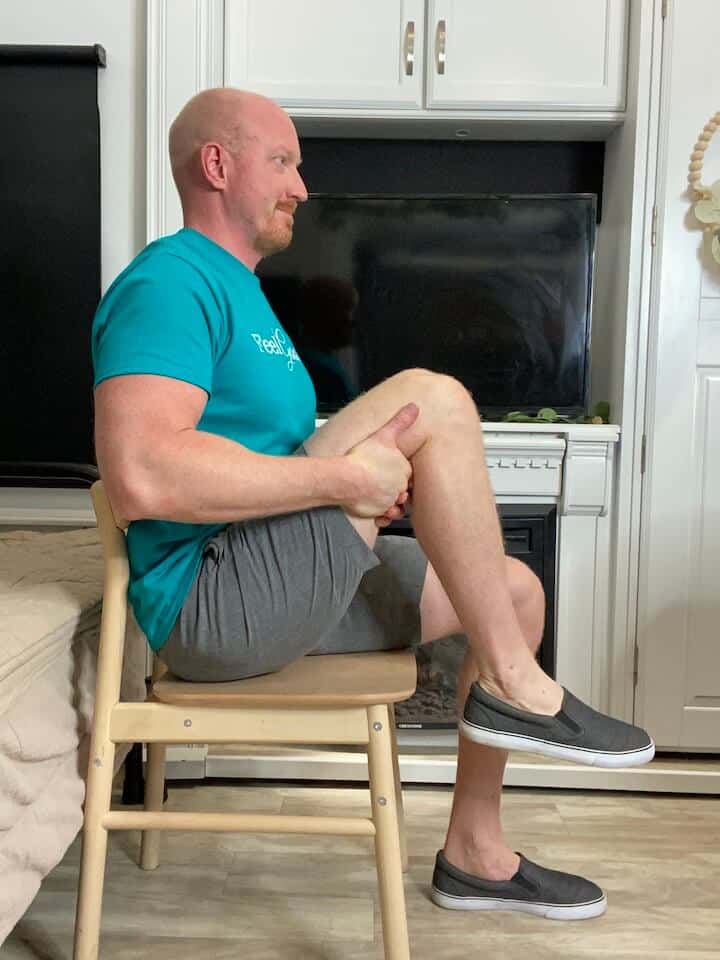
- Starting position: Laying on your back with your knees bent and feet flat on the bed. This is a nice, decompressed position for the spine to begin in.
- Reach the hands behind the thigh of one leg and slowly pull the leg so that your knee moves in towards the chest. Keep the intensity of the stretch gentle and the leg as relaxed as possible.
- Hold for at least 30 seconds.
- Repeat on the other side for a total of 3 sets.
2. Rag Doll Stretch
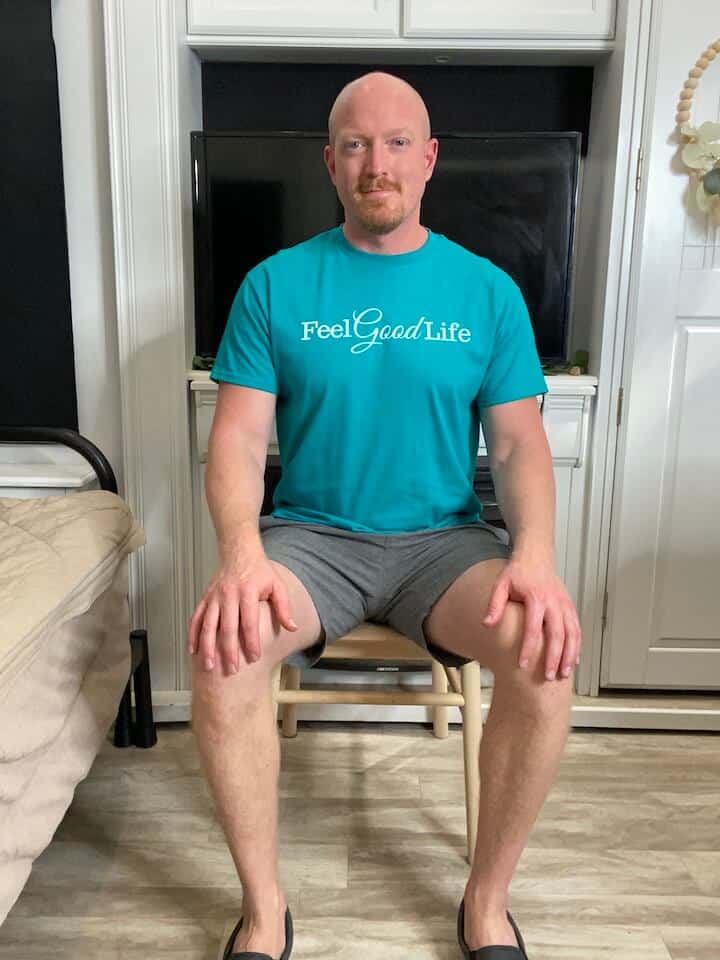
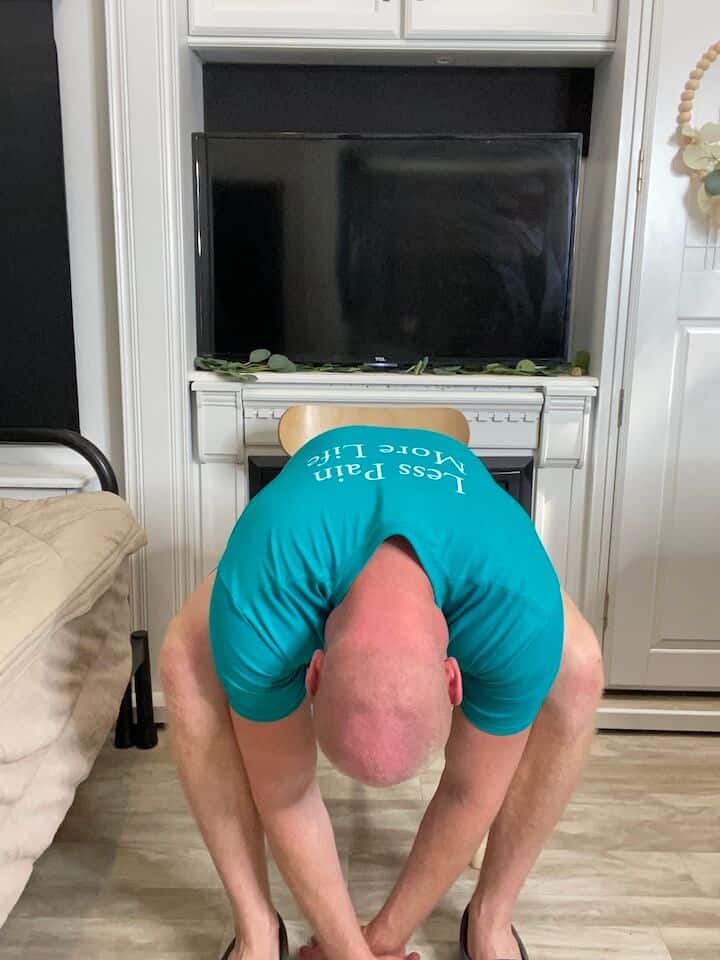
- Sit on the edge of the chair, and slowly fold your arms and chest down until your hands touch the ground. Take a few deep breaths, and on every exhale, sink lower and lower into the stretch.
- When you are ready to return, walk your hands up your legs, pressing into your palms to slowly realign one vertebra at a time.
- Repeat this stretch 2 more times.
B. Core Strength:
1. Abdominal Brace
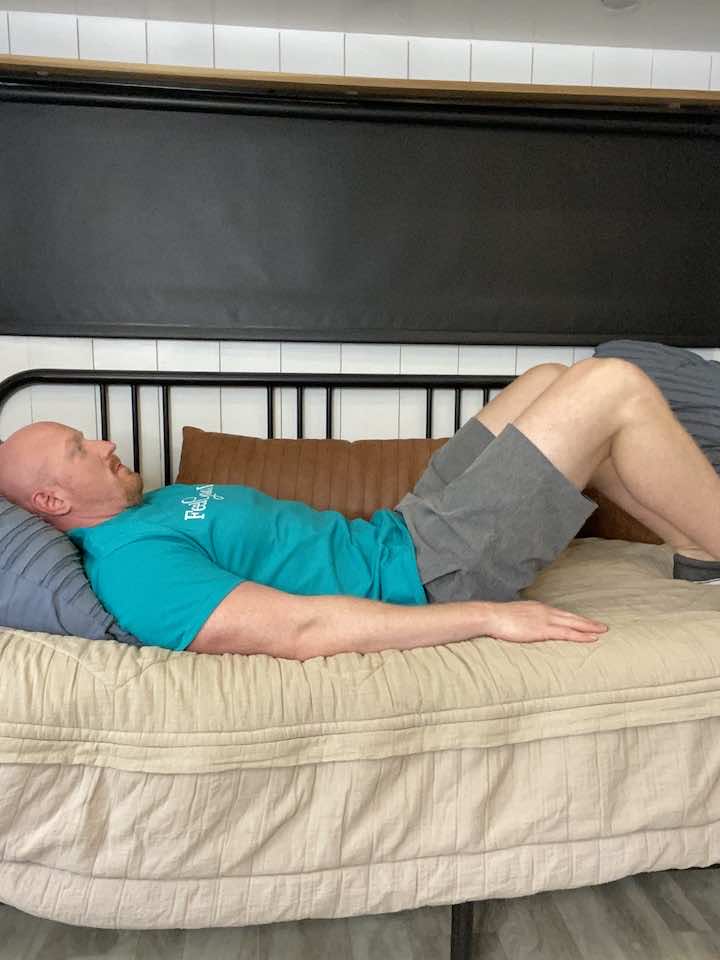
- Begin on your back; knees bent, and feet flat on the floor.
- Exhale and draw your belly button towards your spine (as if a string was pulling on the inside of your belly button from the ground).
- Hold for 5 seconds before relaxing.
- Do this 10 times for one set, and complete 2 sets.
2. Pelvic Tilt
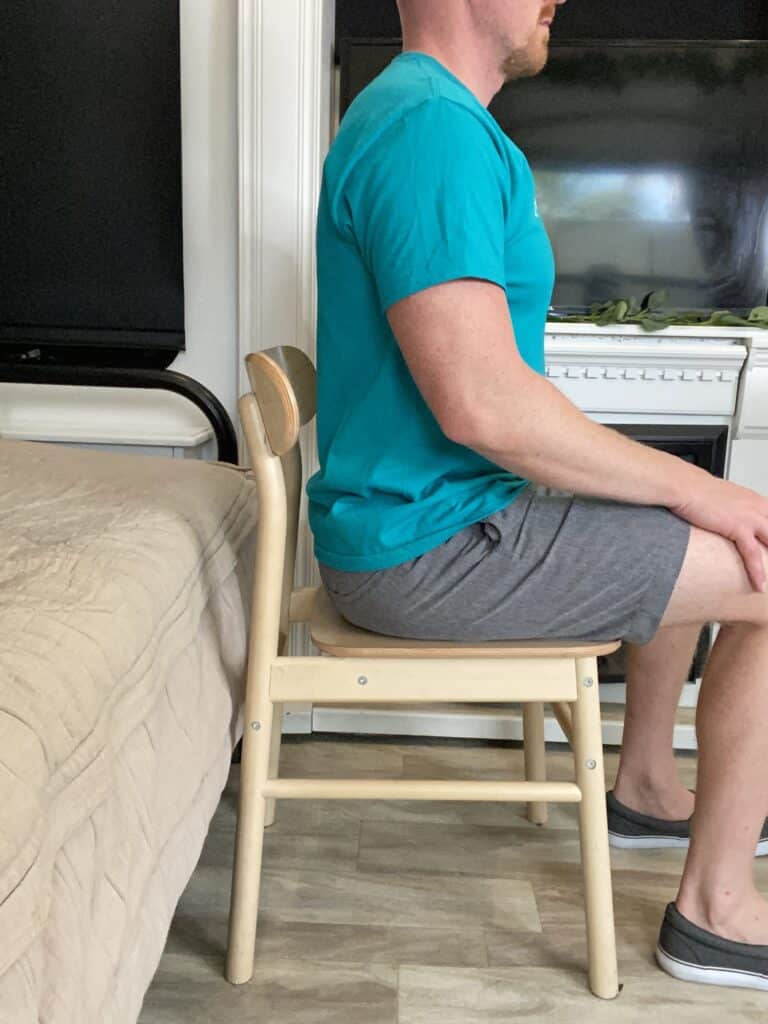
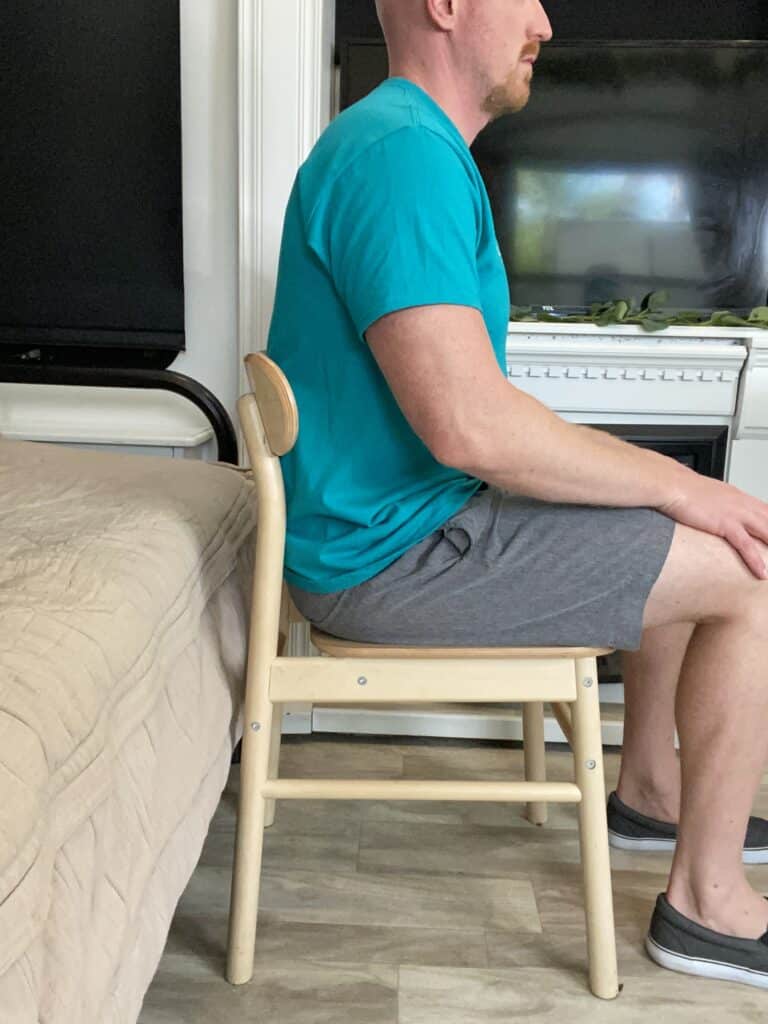
- Sit upright in a chair with your shoulders relaxed. Take a deep inhale and expand your belly.
- As you exhale, contract your abdominal muscles by pulling your belly button in towards your spine and flattening your low back against the chair.
- Hold this position for 5 seconds and then slowly relax.
- Perform 10 repetitions for a total of 3 sets.
3. Supine Marching
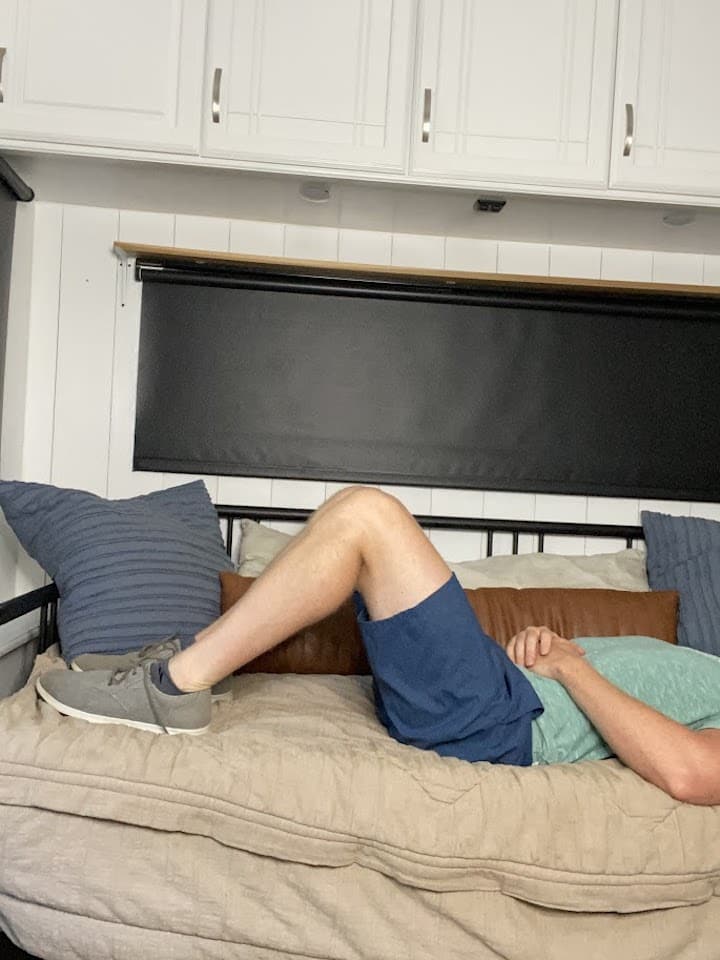
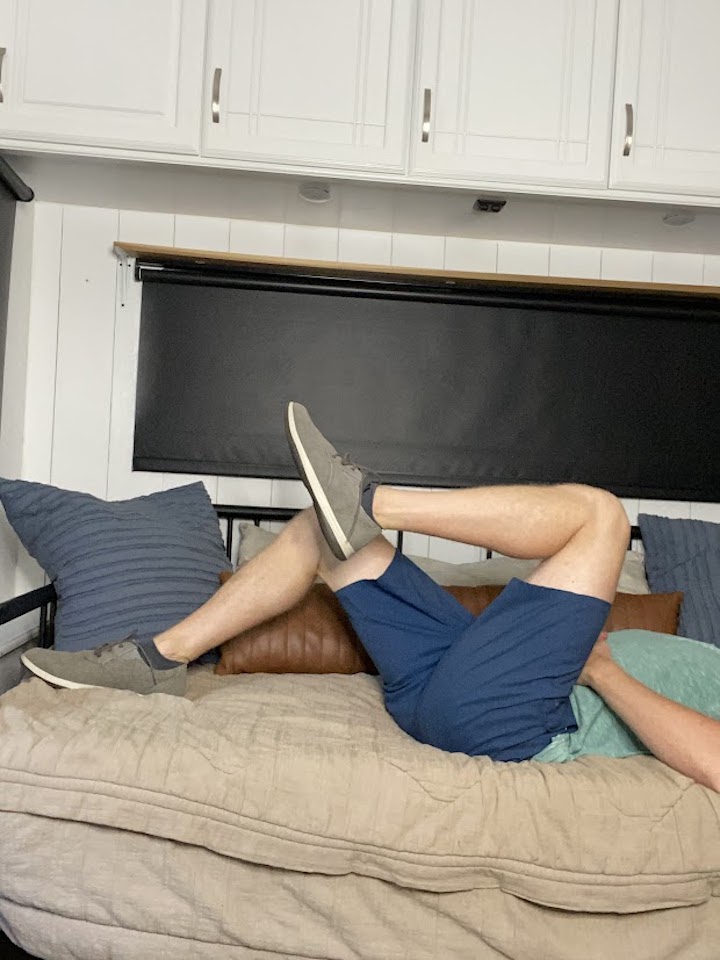
- Starting position: Laying flat on your back (on your bed, couch, or floor), with your knees bent and feet flat on the surface.
- To activate your transverse abdominis, try to pull the belly button down towards the surface, gently flattening the back simultaneously. This will help to brace the core.
- While keeping this braced core (don’t forget to breathe!), lift one knee towards your chest, like a march, then lower back down to the surface.
- Repeat 10 repetitions for 3 sets. Perform on the opposite leg.
- You can perform all repetitions on one side, switch to the other or perform alternatingly between the legs.
C. Hip Strength:
1. Bridge
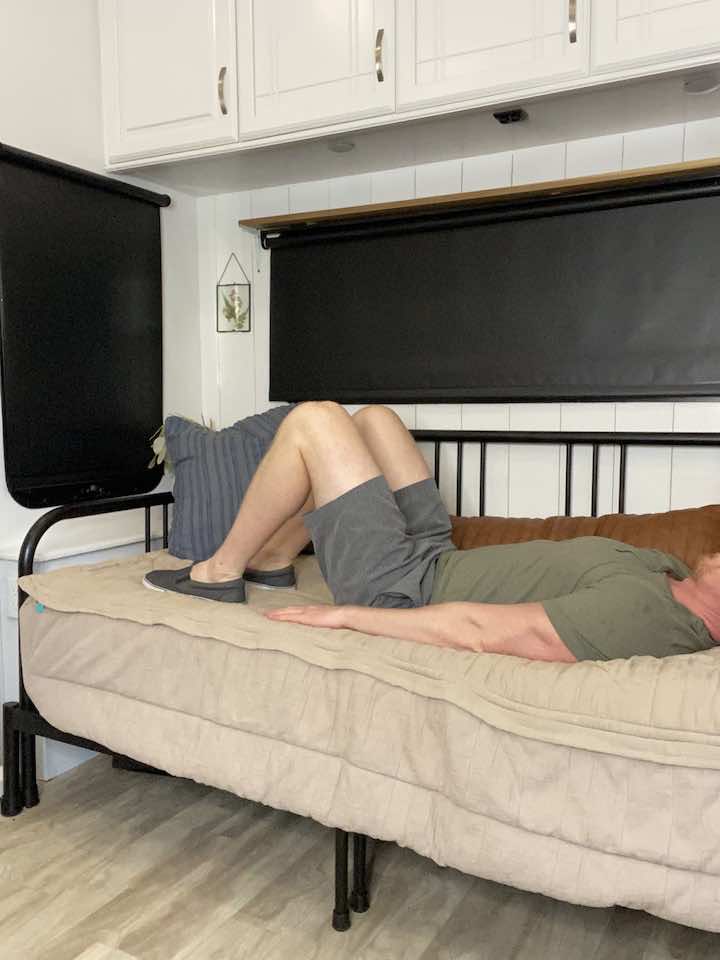
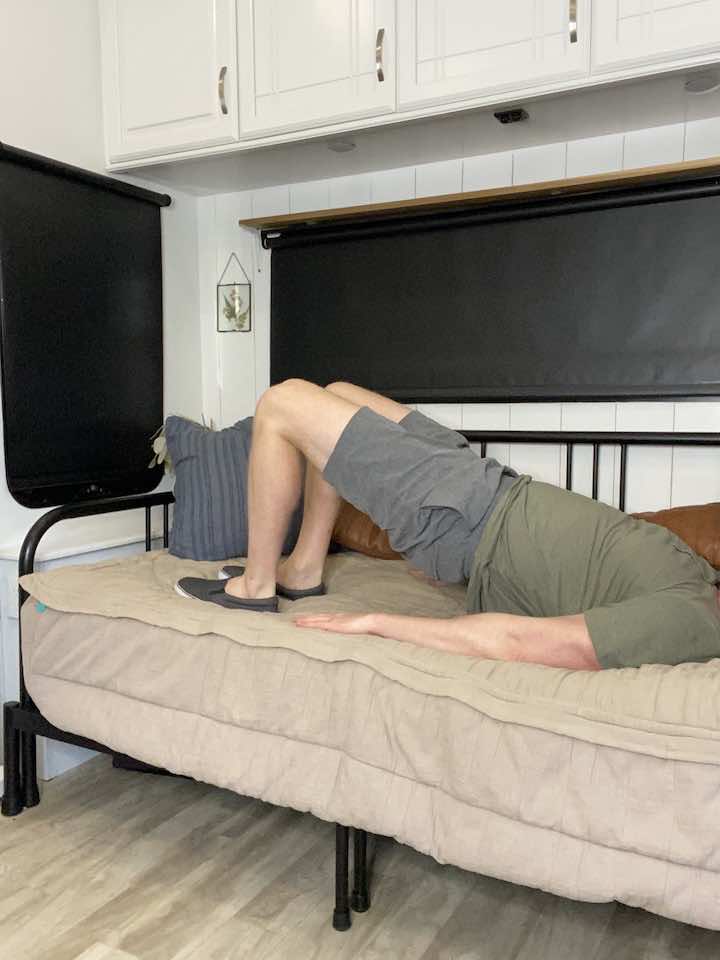
- Lie on the floor or bed with your legs bent and feet flat on the floor/bed.
- Gently squeeze your butt muscles to lift your hips off the ground, feeling a nice stretch in your front thigh and a contraction in the back of your thigh.
- Lower your hips back down to the starting position.
- Repeat 10 times.
2. Clamshells
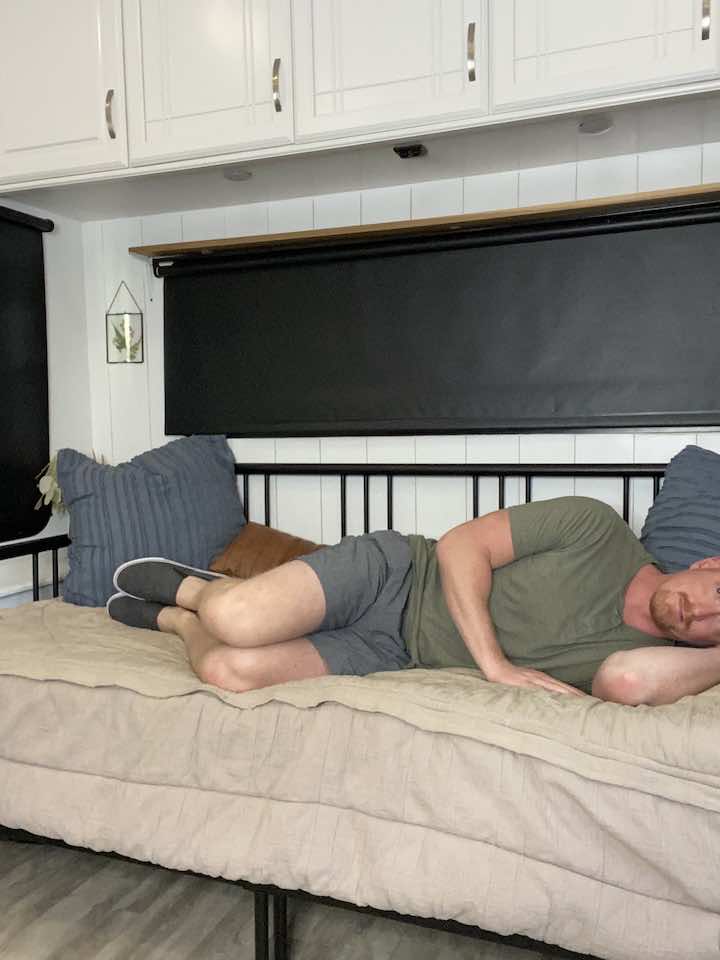
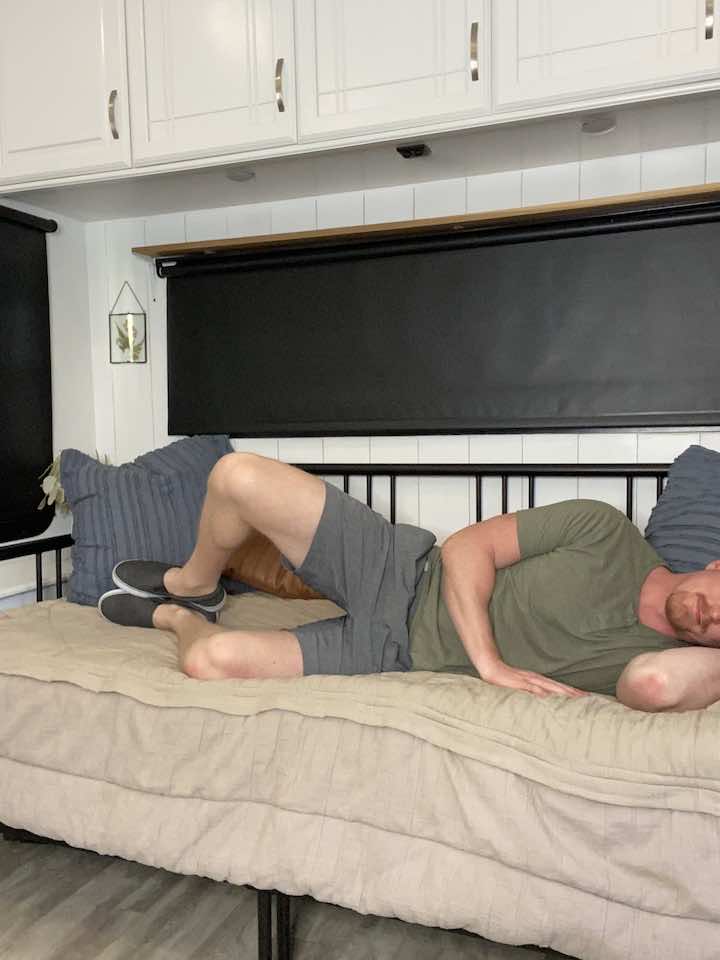
- Start by paying on your side with both knees bent.
- Keep your feet in contact with each other, and then rotate your top leg up.
- Make sure you keep your spine in alignment and your hips don’t rock back! Rule of thumb is to do a smaller range of motion if you think your back is moving.
- Rotate your top leg back down to the starting position.
- Do this 10 times for one set, and complete 3 sets.
3. Standing Hip Lifts
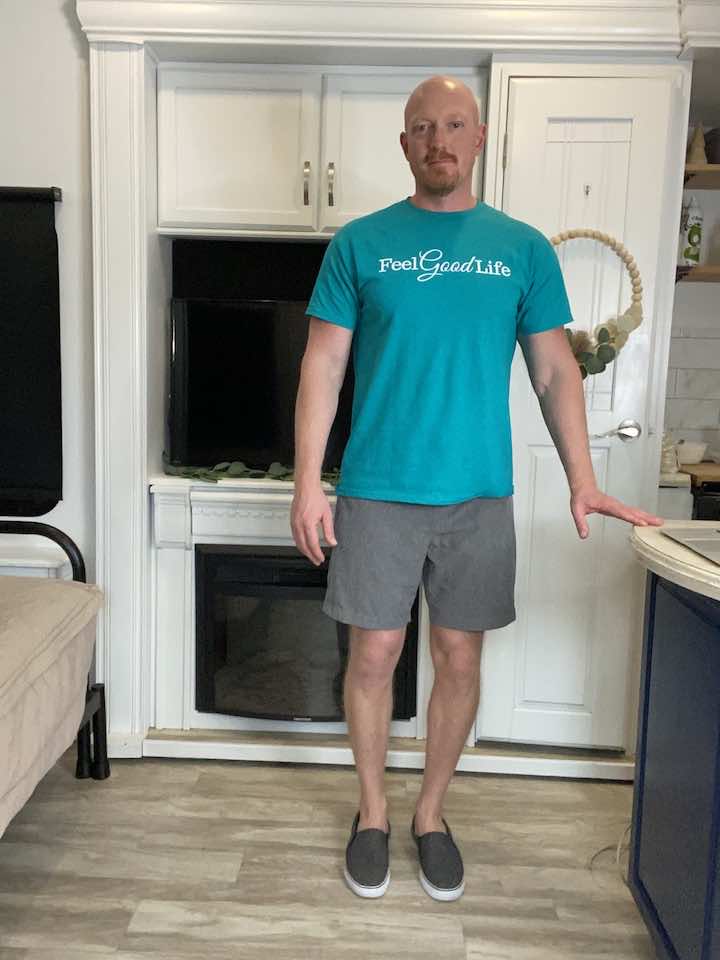
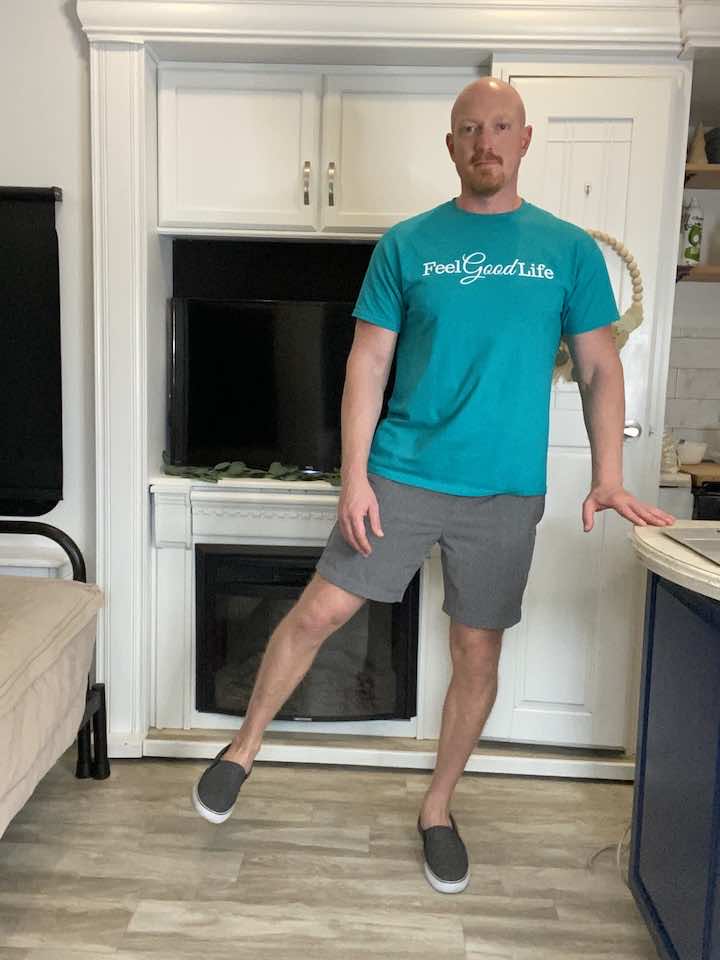
- Stand tall with one hand placed on a bed or chair. Balance on your left leg, keeping a soft bend in your knee to keep from locking out.
- Leading with your heel, lift your right leg out to the side. Be sure not to lean to the left.
- Repeat 10 times per leg.
- Complete 3 sets of the exercise.
4. Standing Hip Extension
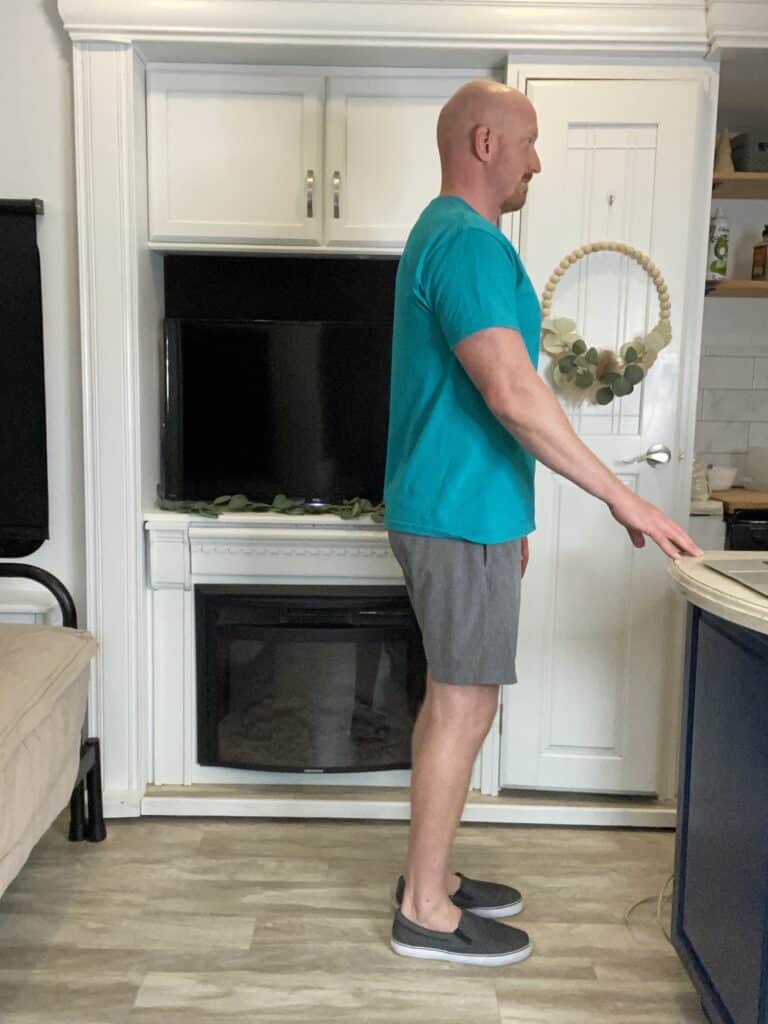
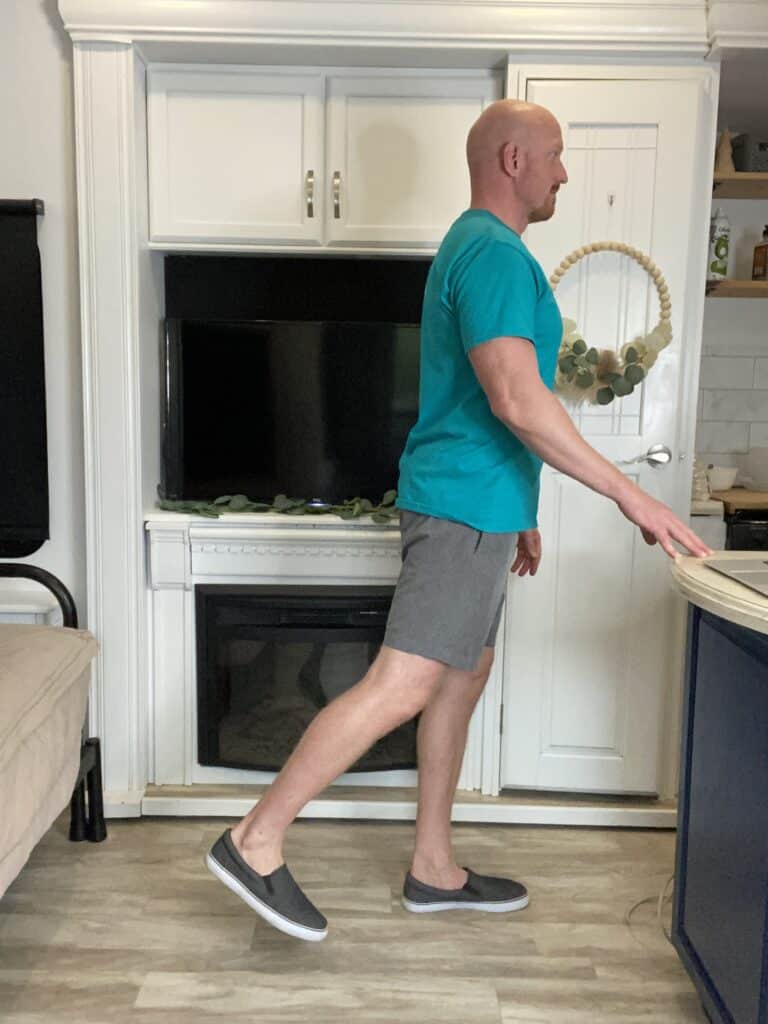
- Stand tall with your hands placed on a steady surface. You can use a counter, sink, or chair (no chairs with wheels) to hold on to for balance.
- Shift your weight onto your left leg, keeping a soft bend in your left knee to keep it from locking out.
- Then, keeping your toes pointed forward and your right leg straight, lift your right leg back a few inches, then lower back down.
- Repeat 10 times per leg for 3 sets.
Tips for Managing Spinal Stenosis
- Stay Active: Regular activity can help maintain spine health.
- Watch Your Posture: Good posture reduces unnecessary spinal strain.
- Heat and Cold Therapy: These can alleviate pain and reduce inflammation.
- Regular Check-Ups: Keeping up with medical appointments can help manage the condition effectively.
Conclusion
Dealing with spinal stenosis can be a journey, but it’s one you don’t have to walk alone. Understanding this condition is the first step to better managing it. Remember, it’s all about maintaining the health of your spine.
Regular exercises, as discussed, can significantly ease pain and improve mobility. These exercises focus on stretching, strengthening your core, and building hip strength. They help to support your spine and alleviate the pressure.
Remember that lifestyle choices play a significant role too. Maintaining a healthy weight, staying active, and paying attention to posture are all key. If you’re experiencing symptoms, consult with a healthcare professional. They can guide you with tailored advice.
Spinal stenosis doesn’t have to limit your life. With the right approach, you can manage the symptoms effectively. Stay positive, keep moving, and take care of your spine!


